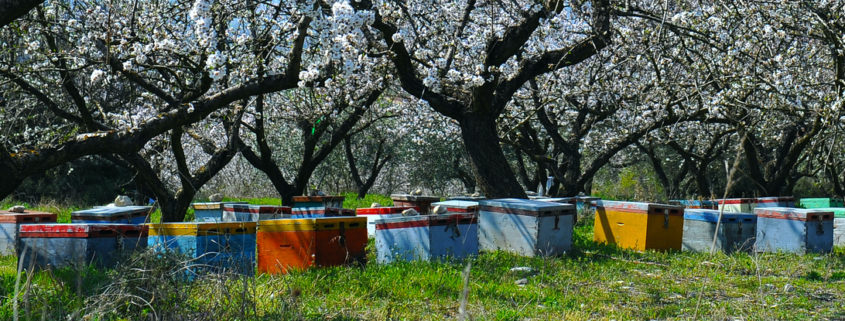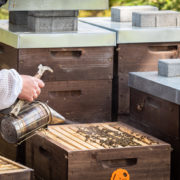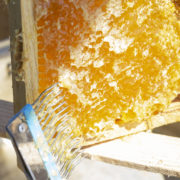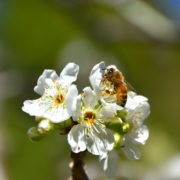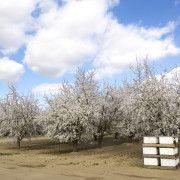Grading Bees For Almond Pollination
January in the United States should be a quiet time for beekeeping. Most colonies are in winter survival mode, doing their very best to stay alive to make it to another season.
In California, however, beehives are anything but dormant. They are busy taking in the full-service treatment of their beekeepers, with regular examinations and ongoing feeding regimens. The reason? Almond pollination is right around the corner. By the first week of February, beekeepers will be moving beehives into the 1.3 million acres of almond groves in the Central Valley of California. Given that most almond growers employ roughly two bee colonies per acre, it is a fair assumption that at least 2 million bee colonies are required to pollinate the annual almond crop. That amounts to over 80% of the entire United States commercial beekeeping supply!
Because demand for pollination keeps rising while the supply of healthy bee colonies declines, almond growers, understandably, grow anxious each season around this time. These growers repeatedly contact their beekeepers or brokers and demand to know how many healthy colonies that they can expect. This in turn transfers the stress to commercial beekeepers. The commercial beekeeper always faces a difficult decision in response to this question. How many colonies should he commit to deliver to the grower? If he commits too high of a number, he risks damaging his reputation, with the risk that he could be considered as someone who does not keep his word. On the other hand, if he plays his hand too conservatively, offering a low number of colonies, he may risk leaving precious income on the table.
In order to answer this challenging question, commercial beekeepers begin to carefully grade their colonies as soon as the January weather permits. The beekeeper needs to know right away not only how his colonies survived the winter, but also in many cases, how the colonies survived the often very lengthy and arduous trip across the United States into California.
Most almond growers demand healthy honeybee colonies that contain, on average, eight frames of bees. That means that when a colony is opened, the inspector can clearly see that the bees not only are present on the frames, but that their population covers eight frames nearly completely.
There is a little bit of prediction involved in early grading. Sometimes in early January a colony, especially one from the Southern portion of the state, may only show up with five or six frames of bees. However, if this same colony is filled with brood, it is almost a certain bet that within a few weeks, the brood will hatch and the colony will expand into the requisite eight frames. If a colony does not emerge at the beginning of January with at least five to six frames of bees present, however, there is usually little hope that it will be of sufficient strength to reach eight-frames by February. In this case, the beekeeper must decide if he needs to combine these bees with another colony in order to salvage some income from the bees. Or, alternatively, if the beekeeper has a large number of colonies that are well above eight frames, he can supplement the weaker colony by borrowing strength from the stronger ones.
(Please note that we use the gender “he” in this post for commercial beekeepers for simplicity. However, there are also many female commercial beekeepers. )

